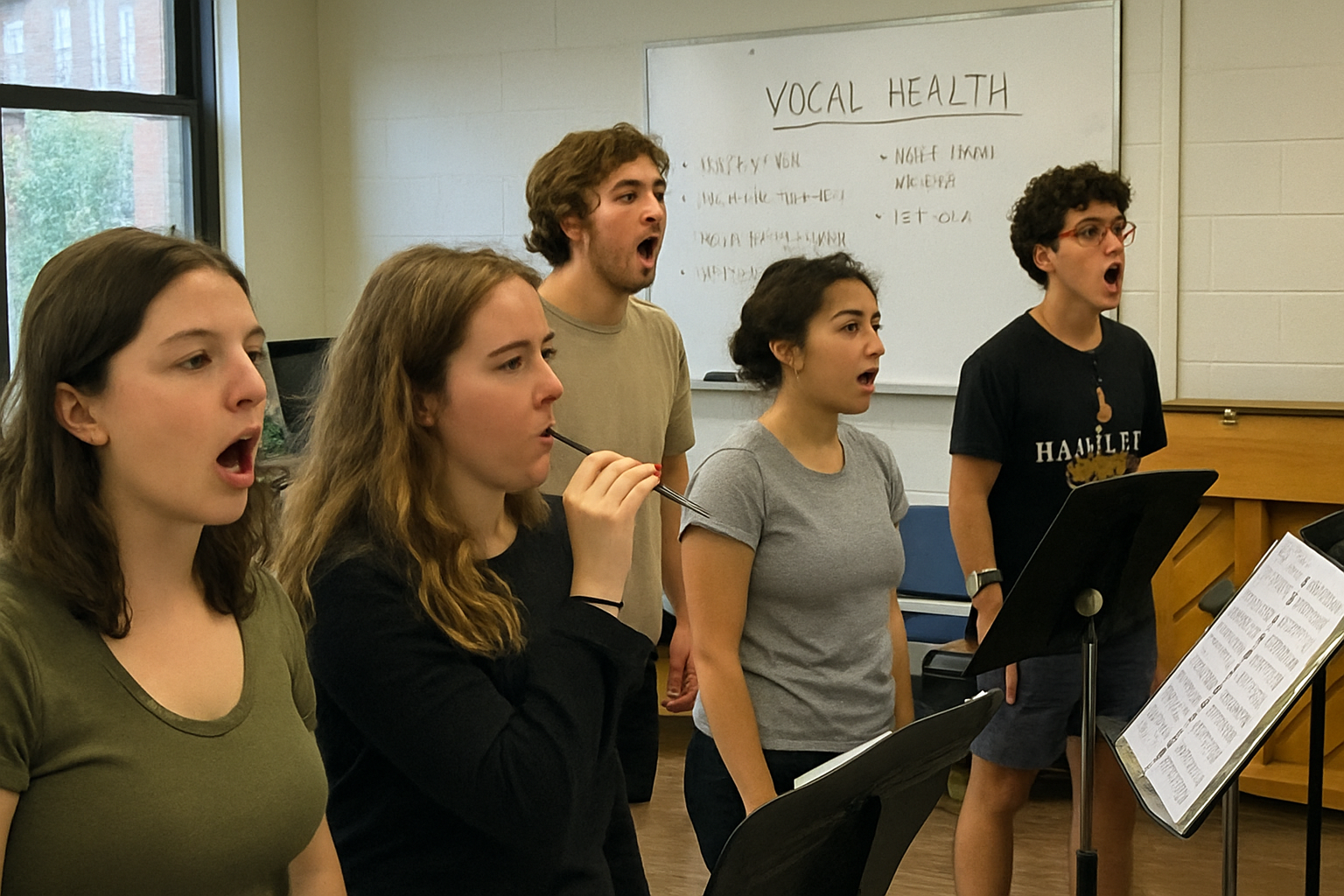The Importance of Vocal Health in Theatre Education
By Broadwaytrax Content Studio · October 3, 2025
Updated October 3, 2025
In theatre, vocal health is essential. A great harmony one day can turn into whispers the next. We often focus on fixing notes and staging, but protecting voices is what's really important.
Vocal health is not just a nice-to-have; it is vital for young performers and for teachers, too. A study shows that teachers face voice issues more than other adults. Right now, 11% of teachers have voice problems, compared to 6% of non-teachers. Over a lifetime, 57.7% of teachers face these issues versus 28.8% of others (Prevalence of voice disorders in teachers and the general population (Roy et al., 2004)). This risk rises when we talk all day and coach big songs at night. Students feel this pressure during rehearsals and performances.
Here’s a quick summary: sound is made when vocal folds vibrate as air passes through them. Loud rooms and dry air can make it harder for these folds to work. This adds strain, leading to vocal fatigue. Exercises like lip trills and straw phonation help reduce this strain (Why Semi-Occluded Vocal Tract Exercises Are Effective). Staying hydrated is also key for good vocal health (The role of hydration in vocal fold physiology (Sivasankar & Leydon, 2010)).
Warm-Up Exercises Create a warm-up that protects voices. Limit it to seven to ten minutes. Start with gentle stretches, like shoulder rolls and deep breaths. Then include warm-up activities such as humming or lip trills. Encourage students to practice small notes before moving to more difficult parts. Finish with easy spoken lines from the show before smoothly transitioning into singing. Two short exercises of SOVT (60 to 120 seconds) at the start of rehearsal can improve comfort (Why Semi-Occluded Vocal Tract Exercises Are Effective). For visual learners, the Cleveland Clinic offers a helpful video on straw phonation (Cleveland Clinic Health Essentials: Straw Phonation (Explainer + Video)).
Cool-Down Strategies Always finish rehearsals with a cool-down. Even a few minutes can make a difference. Use gentle lip trills and quiet humming to relax the voice. After a show, remind students to hydrate, get enough sleep, and take short breaks to recover. Medical experts recommend these habits, along with clear guidelines on when to seek help for vocal issues (BAPAM Guidance: Vocal Health for Performers).
Creating a Vocal-Friendly Environment Control the classroom environment as much as you manage the music. Dry winter air can make it tough for voices. A small humidifier can help. Teach students to avoid clearing their throats and to sip water instead. Whispering can add strain, so encourage quiet speaking (ASHA Practice Portal: Voice Disorders).

Managing Rehearsals Think like a coach during rehearsals. Limit high-effort singing to ten or fifteen minutes. Then switch to light blocking or dialogue. Schedule a quiet five-minute break every hour for water and calm vocal exercises. Keep sound levels manageable. High background noise can force students to sing louder. The safe noise limit is 85 dBA during an eight-hour day (NIOSH: Occupational Noise Exposure). Using a personal amplifier can help teachers maintain their voice.
Making Smart Artistic Choices Your choices also affect vocal health. Microphones can help with sound without straining. Adjust monitor volumes so students don’t have to push their voices. Choose music keys that suit the singers, as small changes can ease vocal strain. Favor arrangements that allow healthy and easy singing.
Supporting Changing Voices Adolescents often face rapid vocal changes. Use adjustable parts and offer options for different voice ranges. Allow speak-singing for transitioning singers. The NAfME provides resources for managing these changes (NAfME: Working with the Adolescent Changing Voice). When students feel comfortable, they will grow as singers.
Responding to Vocal Issues Have a plan for when issues arise. If hoarseness lasts more than four weeks, it’s time for a check-up. Look out for pain, noisy breathing, or blood, which require immediate attention. It’s normal for performers to work with voice specialists (Clinical Practice Guideline: Hoarseness (Dysphonia)—Update (2018)). Families should know how to find a trusted voice doctor or speech therapist. Many groups provide lists of qualified professionals (BAPAM Guidance: Vocal Health for Performers).
Reduce strain with student-friendly keys.
Customize Accompaniment TracksWeekly Vocal Health Plan In a typical week, start rehearsals with the warm-up mentioned above. Use a humidifier during dry spells. Plan quiet breaks every hour. Alternate heavy songs with lighter activities. Always finish with a cool-down. For upcoming auditions, limit intense rehearsals and schedule rest days.
By focusing on vocal health, you create a better environment for learning. This helps students stay healthy and perform well. In turn, it leads to better shows. Healthy voices contribute to lasting success in theatre.
Healthy voices are not a bonus. They are the show.